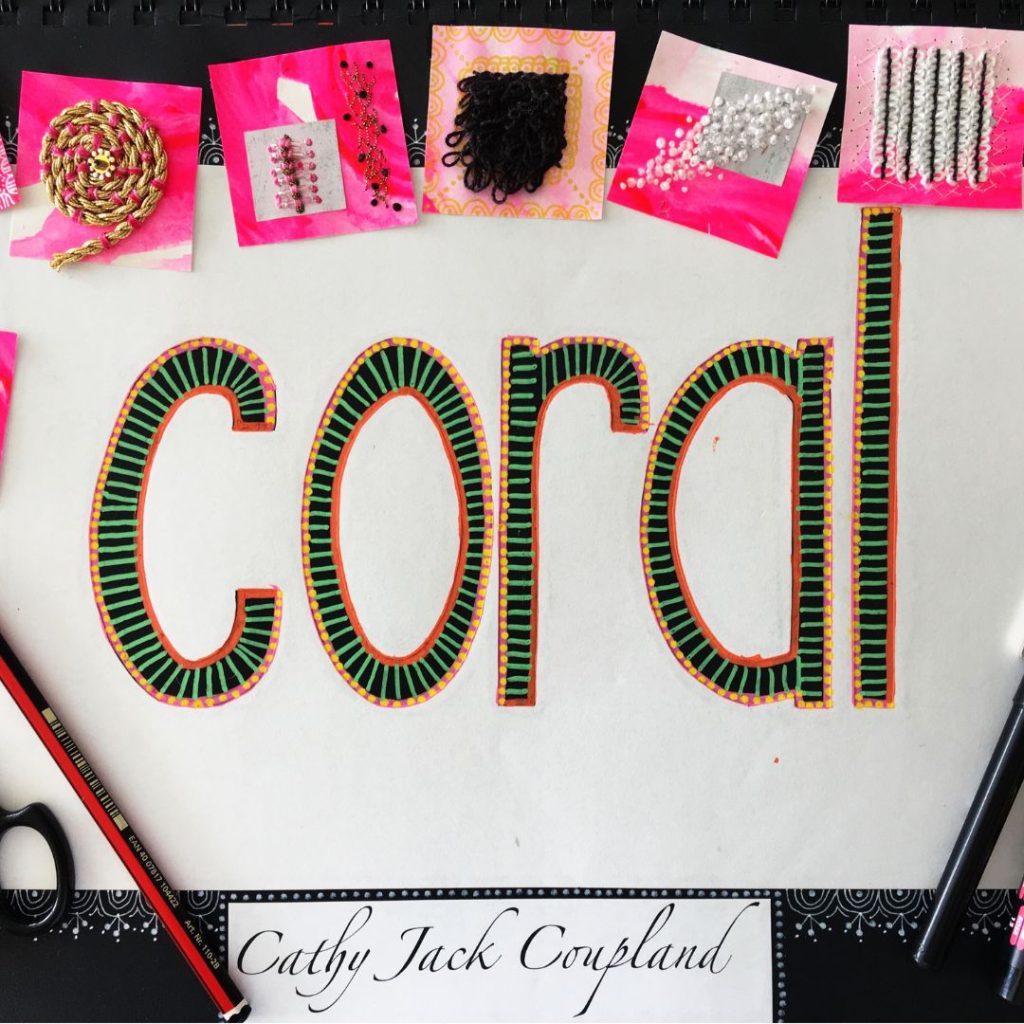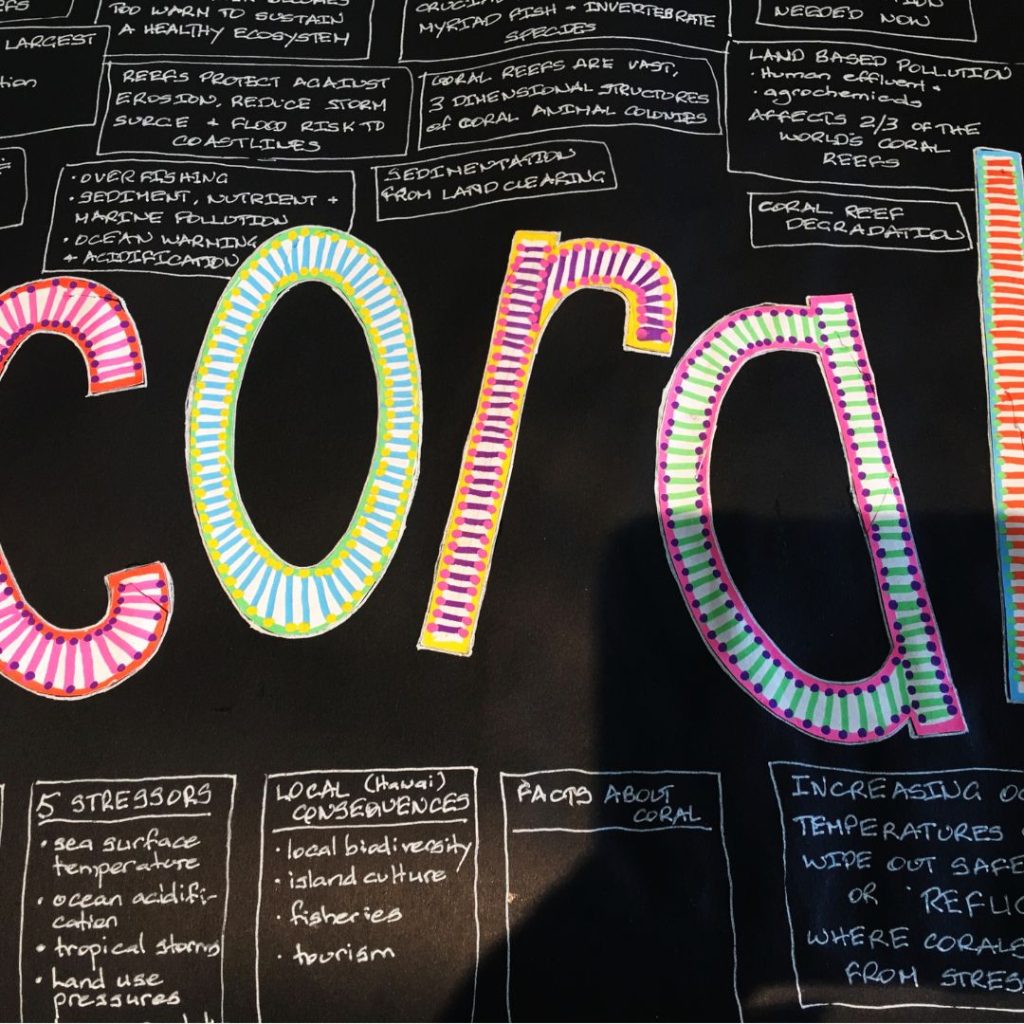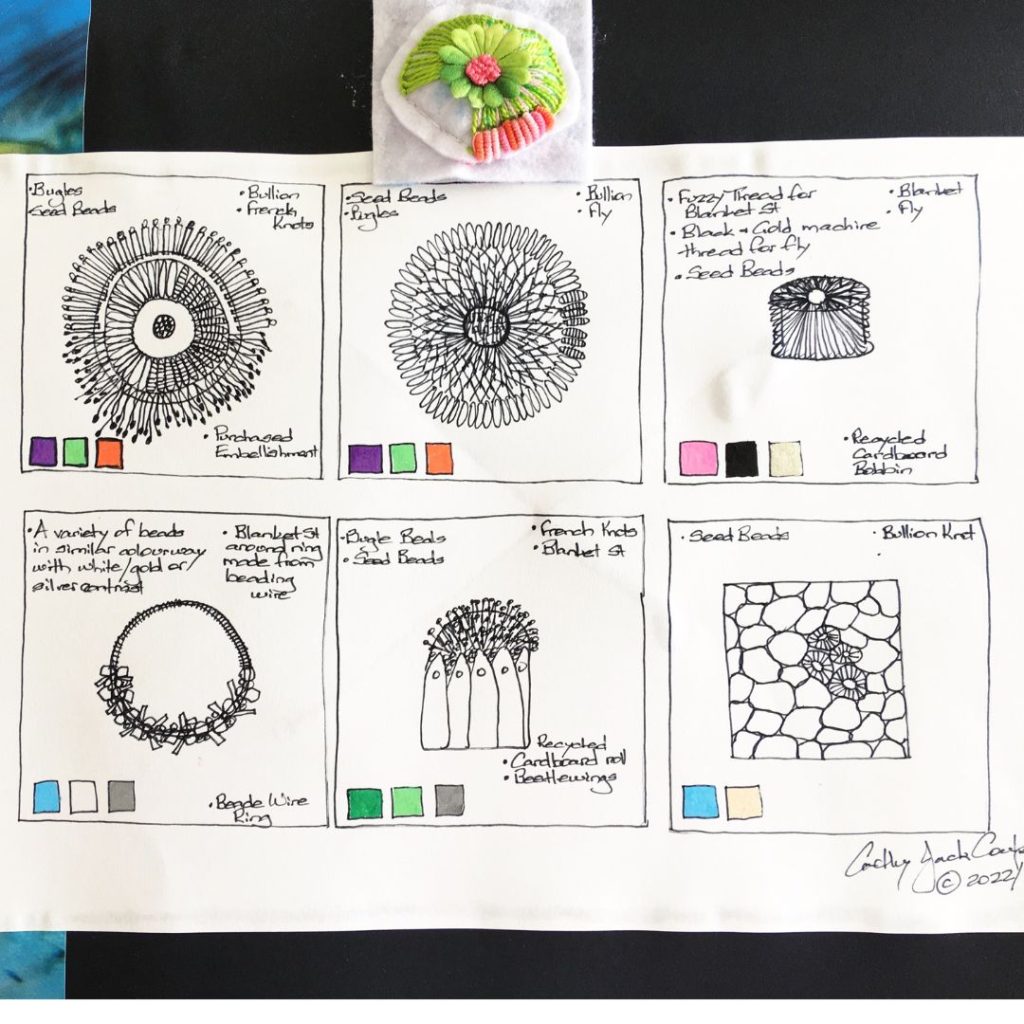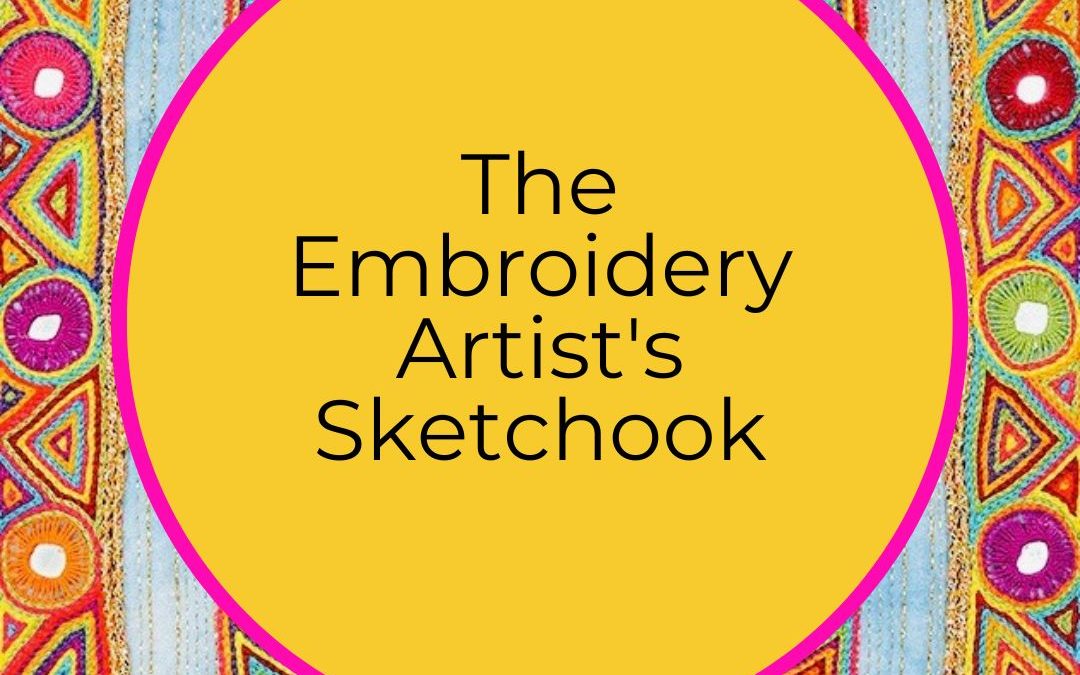Do you use a sketchbook or are you interested to learn more about the concept?
Then read on, because I’m a huge fan.
But, be warned, sketchbooks are addictive and time-consuming – they’re also the perfect platform to generate inspiration, promote curiosity, trial techniques and media as well as foster your own visual language.
It’s a place to learn, observe, record and grow.

Let me sing the praises of the textile and embroidery artist’s sketchbook, but first, let me explain exactly what I mean by the term sketchbook.
Quite simply it’s a book or pad with blank pages, used by an artist as part of their creative process.
They come in a range of sizes and styles, commercially produced or handmade, spiral bound or stitched. They can be large or small mini-books, or even simply a large sheet of paper divided into small squares. They can be rolls or scrolls, concertinaed, made entirely from fabric, oriented landscape or portrait.
Best of all, sketchbooks are a place where pages can be manipulated, pleated, folded, torn or cut, layered, pocketed, extended, and joined, hide flaps or be overlaid with cut-out windows. The possibilities are bound only by your imagination.
But remember, you’ll be working with washes, paints, inks, and markers, and if you’re at all like me, you’ll be doing a lot of rubbing out – so a quality paper is advised.

Sketchbooks also come with a variety of names such as workbooks, notebooks, journals, visual journals, or diaries – but the one thing they all have in common is that they are record-keepers of research, knowledge, experiments, images, sketches, notes, colourways, ideas, resources, contacts, samples, fabrics and threads – even collections of ephemera and found objects.
So why keep a sketchbook?
- they’re a tool to help consolidate ideas and inspiration, ideas that can be interpreted in your design work – they’re a place to observe, record and store
- they’re a record-keeper of progress, of successes and failures – they show your journey from concept to fully realised artwork
- your sketchbook becomes a residence of information surrounding your concept – everything is in one easy-to-find place
- sketchbooks show you your own unique style and voice if you take the time to look – things such as the marks you make, the symbols or shapes you use, the colours and lines you like to work with – that’s your unique style
- they also help hone your individual method of working to achieve an artistic outcome – they show your process, one that can be perfected over time, that suits your needs and how you like to work
- just opening your sketchbook can often trigger a creative mindset – a place to brainstorm, think outside the square and go down endless rabbit-holes
- they are the domicile for sampling examples and experiments
- they foster confidence in observational or non-representational, spontaneous drawing
- your sketchbook is a safe place for your thoughts and ideas – no one has to see it but you, unless you choose otherwise
- there are no rules as to how you work in a sketchbook – just make it your way
- they can be a form of personal discipline, helping to create a routine of working that suits you
- they’re a jumping-off point, a place to start a conversation with an idea or inspiration
- they provide the personal freedom to explore concepts around identity, dreams, fantasy, magic, mystery, or memory, even the world of protest, commentary or politics, environmental and social issues as well as record a sense of time and place through landscapes, seascapes and cityscapes
- they become the repository for collections of ephemera
- they can become the basis for a storybook or narrative
- they help problem-solve – either design or technical issues, things like compositional layout and hanging or display options
- research can be narrowed down to a very specific area, such as colour, edgings, fastenings or finishings
- small sketchbooks are easily transportable, enabling outdoor work, and museum visits or can accompany you on holiday travels
- sketchbooks help you develop as an artist, creating your own visual language
- sketchbooks are a huge aid in writing a detailed, comprehensive, and thoroughally readable Artist Statement

Really, what’s not to like?
Yet I do know embroidery artists’ who dislike the idea of using a sketchbook. All I can say is, each to their own.
In my opinion, the benefits are so worthwhile.
Picasso once wrote, ‘I am the sketchbook’ on the front cover of one of his sketchbooks.
I offer three inspiring book reviews on Sketchbooks on my Stitch Safari Podcast. Listen here. Just scroll down to the ‘Three Book Reviews on Sketchbooks for Textile Artists’ episode.
So why not start a sketchbook and immerse yourself in a world of endless possibilities?
And enjoy the journey.


